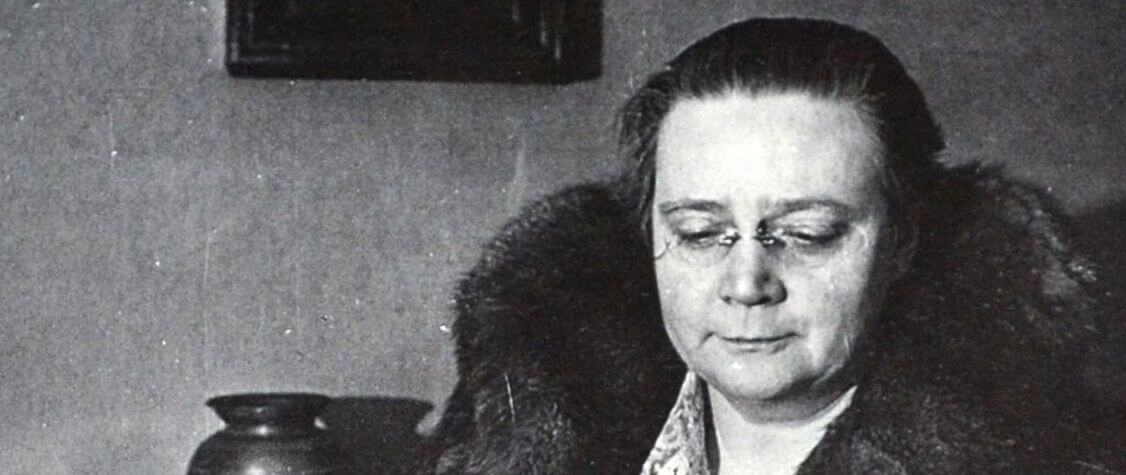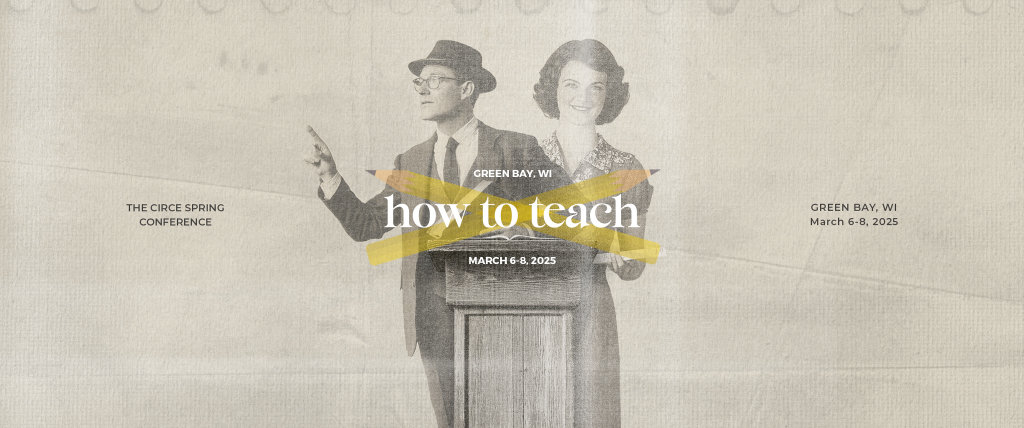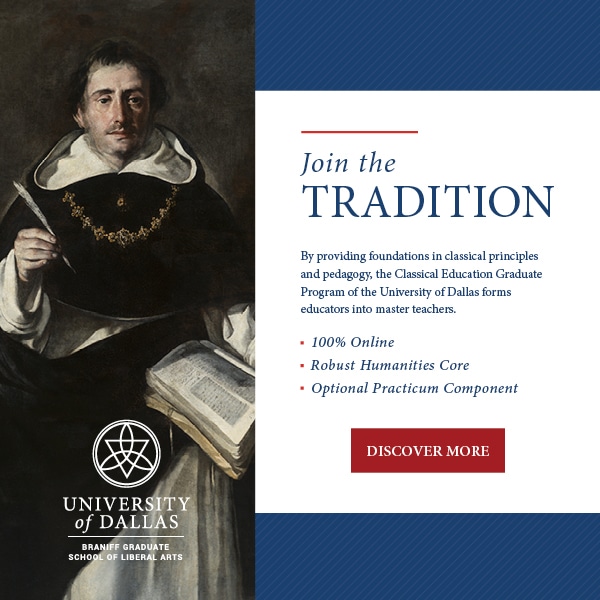A Dorothy L. Sayers Primer: The Woman Behind the Essay
She was more than just the writer of a famous educational treatise.

Writing about a writer is like painting a portrait of person when she’s standing right next to you. While you are deciding what color her shirt should be and whether or not to emphasize the cheekbones, she is there, expressing her thoughts on everything from dinner plans to Shakespeare. You end up thinking to yourself: “Why am I painting a portrait? It’d be better if people just met her.” But a portrait can be more accessible than a person. For a quick and easy acquaintance, it is easier to read an article about a writer than to read her books. The reader may not get to know his subject as well, but at least he can decide if he wants to know her at all.
Fortunately, almost everyone in classical education has been introduced to Dorothy L. Sayers. They have met her through her essay “The Lost Tools of Learning,” which is staple reading at my own classical school and without which any modern attempt at classical education would at least seem incomplete. “The Lost Tools of Learning” walks us through the three phases of learning: grammar, dialectic or logic, and rhetoric. Simplistically put, during the grammar years, children memorize facts, during the logic period, they connect the dots and argue, and finally in rhetoric, they can express their ownership of the material. Sayers calls these stages, respectively, poll-parrot, pert, and poetic. Her essay gives many insights into the art of learning, but it’s just one small part—one cuff of the sleeve, perhaps—of her portrait. Nor is it the most representative part.
Sometimes I like to play a game where a victim has to come up with three words or phrases that describe a concept. Orange: bright, street cone, fruit. Italy: sun-baked, Rome, olives. Dorothy L. Sayers: detectives, creed, Dante. Each of these words is so intricately connected with Sayers that it could have and has merited a free-standing book. And there are many more I might have used. In fact, one of the best ways to describe such a wide-ranging author as Sayers might be the least artistic: a numbered list.
1. Dorothy L. Sayers insisted on being identified as “Dorothy L. Sayers.” The “L” was very important. In an exasperated letter to her publisher, she pleads that “it is no doubt true that ‘Dorothy Sayers’ is easier to display, and if I had thought about this in the beginning, I would have adopted ‘D.L. Sayers’ and stuck to it. . . .Mayn’t I have my ‘L’? I wish you would take this request seriously. Yours despairingly.”
2. If you don’t know Sayers from “The Lost Tools of Learning,” you have met her through Lord Peter Wimsey, the hero of her 13 best-selling detective novels and numerous short stories. Lord Peter is the reason that anyone was listening when Sayers wrote on other topics. In his generous, debonair fashion, he paid her rent and kept her fed. From his first novel, Whose Body? to his last, Busman’s Honeymoon, he introduced readers to the contradictory world of violent crime, minute observations, English tea, and literary quotes. Although her novels sold—and still sell—very well in England and America, Sayers has been criticized for making her books academically snobbish: In conversations with his love, Harriet, Lord Peter may speak exclusively in French poetry, without a translation. It’s a charming frustration for the reader.
3. Sayers was a researcher. Unlike her hero G.K. Chesterton, who wrote a biography by simply remembering quotes and misquotes and then scribbling down his insights, Sayers worked tirelessly to make sure her books were as accurate as possible. The Nine Tailors, a novel involving church bells, includes detailed quotes from a reference work on change-ringing, complete with breakdowns of certain peals (“a Peal of 15,840 Kent Treble Bob Major was Rung in 9 hours and 15 minutes. . .”).
4. Despite the utility of “The Lost Tools of Learning,” Sayers was not a teacher. She tried it once when the writing wasn’t going so well and found that it didn’t agree with her, although her students had fond memories of her unorthodox style. The truth was that she was so committed to high-quality craftsmanship that bringing up students in the way that they should go was more of a trial than a blessing.
5. She wrote multiple books on Christianity. Perhaps the best of her non-fiction works is The Mind of the Maker, in which she compares the creation of a piece of art to the three persons of the Trinity. “Failure in the father,” she says, “may be roughly summed up as a failure in Thought and failure in the son as a failure in Action, [and] failure in the ghost is a failure of Wisdom.” When she applies these distinctions to literature, she gives us a powerful tool for understanding why this well-written piece may leave us cold (a failure in the ghost) or why that great idea just can’t seem to get off the ground (a failure in the son).
6. As a Christian of the Anglo-Catholic communion, she was committed to the creeds of Christendom. And she was equally committed to reminding us how exciting those creeds are. Her method of doing this was to avoid stale spiritual language: “Nobody cares . . . nowadays that Christ was ‘scourged, railed upon, buffeted, mocked, and crucified,’ because all those words have grown hypnotic with ecclesiastical use. . . . But it does give people a slight shock to be shown that God was flogged, spat upon, called dirty names, slugged in the jaw, insulted with vulgar jokes, and spiked upon the gallows like an owl on a bar door. . . . If nobody is going to be shocked we might as well not tell them about it.”
7. The above quote has ellipses because Sayers was comfortable using strong language. She was not foul, but she was not a gnostic: She believed that God made physical reality, redeemed it, and used it. An extension of this conviction was that her letters could get a little salty. More significantly, she believed that those who employ physical reality, such as artists and craftsmen, have just as holy a calling as does a priest: “The integrity of the artist is autonomous, and if Art is again to serve the Church, the Church must learn to serve the Arts. She must observe a decent humility towards the artist, and acknowledge that his is a true vocation.”
8. Sayers’ home life was certainly not gnostic. Her only child was born out of wedlock, and she ended up marrying a different man than the father. She never broadcasted these things; she affirmed the Christian teaching of sex confined to marriage, though she had not obeyed it. She was, however, deeply interested in women’s equality with men and expressed that interest in a variety of ways: She was one of the first woman graduates of Oxford, regularly wore trousers, and, when asked to speak on women’s issues, provocatively titled her talk “Are Women Human?”
9. She wrote plays. Any Christian would do well to read The Man Born to Be King, a BBC radio drama about the life of Christ, or The Devil to Pay, a reinterpretation of the Faust legend.
10. She was immensely creative during her adult life; I have mentioned only a few of her publications. But she had one more contribution to offer before passing away suddenly at the age of 64. Thanks to the influence of Charles Williams, she fell head over heels in love with Dante and the Divine Comedy. Though she did not know Italian when she first read it, she learned it in order to read through the Three Realms of the Dead in the Comedy’s original language. Such was her linguistic skill that Penguin Press chose to publish her translation, which is still in print.
This list, artificially confined to 10 points, is only a sketch of the full portrait. A biography would fill in some of the color. Her own writings, naturally, offer the closest acquaintance we can get this side of heaven; they introduce us to a woman who valued competence as highly as Ayn Rand yet esteemed the Church as much as any bishop. But I’ll let her housekeeper, possibly the best witness into a person’s soul, say the last word: “A more kind, thoughtful person never lived, and I was very sorry when she died.”
Lindsey Scholl
Dr. Lindsey Scholl teaches Medieval Humanities and Latin at Trinity Classical School in Houston, TX, where she and her husband enjoy hosting high school Bible Studies and discussion groups. She is also the host of the Dorothy L. Sayers podcast.









